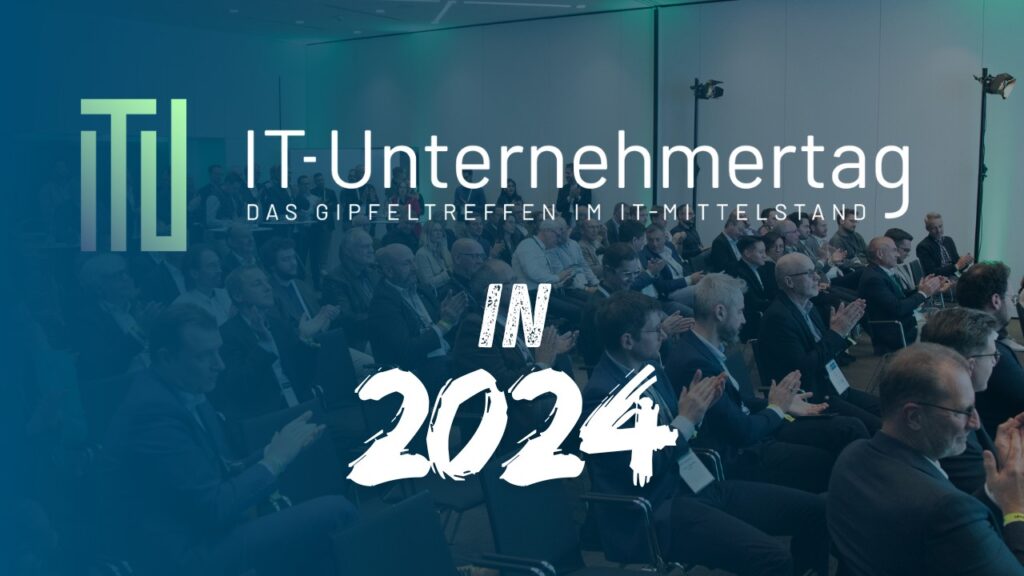There’s no shortage of innovation in the manufacturing sector, yet numerous factors prevent these from being readily and rapidly implemented. The cost of new hardware is certainly a consideration, but it’s not the only hurdle.
Unfortunately, despite the immense potential of Industry 4.0 and smart manufacturing, access to new technological capabilities is instead hampered by the limitations of existing IT infrastructure, which cannot support these new technologies at the desired pace.
In this blog, we identify these common IT constraints in the manufacturing industry and propose actionable strategies to overcome them and get back on track to greater efficiencies and productivity.
Manufacturing is getting smarter
Advancements in robotics, AI, machine tools, sensors, and process optimization are setting the stage for a revolution in manufacturing. Academic and industry journals like International Journal of Manufacturing Research, Manufacturing Review, and Manufacturing Technology Journal are all brimming with stories of unrelenting progress in manufacturing innovation.
From IoT and AI-powered tools that predict or detect defects, to software that streamlines product customization or automates numerous processes – new advancements keep stacking up. However, the ideal ‘technologically enabled’ manufacturing world envisioned by academic researchers is still far ahead of the reality on the ground.
Some industry leaders are already making strides. These include LG’s ‘Lighthouse Factory’ that uses a digital twin to predict and manage production processes, Infineon’s IoT-driven smart factory, or Bosch’s AI-powered manufacturing. These advanced facilities use a combination of sensors, intelligent software, and automated hardware to orchestrate numerous processes, at optimum efficiency, and without any human intervention.
What’s holding manufacturers back?
The ‘Theory of Constraints’ states that the throughput/output of a production process is always limited by whichever single factor that constrains it the most. For example, production processes are easily constrained by a lack of production capacity, available skills, or raw materials.
However, when it comes to innovation, it’s clear that the primary constraint for most organizations is frequently their IT infrastructure. Without the right IT to support new technologies, a factory can never become autonomous or fully optimized.
This critical constraint must be overcome to reap the massive gains that come from embracing smart manufacturing and process optimization.
7 common IT constraints for manufacturing and strategies to overcome them
1. Limitations of COTS (e.g. ERP or WMS) or core software
Many manufacturers either heavily customize their commercial off-the-shelf (COTS) solutions (like ERPs and WMSs), or custom-build core software that meets their exact needs. These were never developed for the requirements of Industry 4.0, however, so they lack the ability to integrate new technologies, data, or processes.
COTS solutions may evolve once vendors catch up to the requirements of the market. But by then, any competitive advantage is already lost. The same capabilities will be implemented in the same generic way by all its customers. Furthermore, a heavily customized ERP or WMS will be hard to update to the most recent version.
Likewise, existing custom-built core software isn’t always a constraint, but when it can’t adapt to new demands, it can become ‘legacy’. Many custom-built core systems are built using high coding, making it harder to support new kinds of data exchanges without a lot of work. By contrast, core software built with a suitable low-code platform does not experience this limitation.
Legacy software may also struggle with the intensive processing requirements of technologies like IoT, responsive supply chain management, predictive analytics, or advanced automation. As a result, these high-coded solutions (which started out as a perfect fit) can eventually become outdated and limit your possibilities.
Strategy: Start by streamlining your COTS solution. For example, if your ERP is highly customized, look to reduce customizations and relocate these functionalities to low-code applications built in a flexible and scalable technology platform. This secures your continued agility and complements your ERP. This allows you to maintain the most up to date ERP version, and readily create the new, innovative capabilities that you need.
Whether your core is COTS or custom-built with high-code, this is a huge paradigm shift. Organizations are accustomed to using their core software as the center for almost all of their processes and data, instead of using a constellation of applications for specific processes. But, by separating added functionalities from the core (and the value it still provides), you’re no longer dependent on the limited capabilities of your core software.
Instead, it becomes possible to implement new capabilities like AI much more easily, and faster too. You also gain the ability to make iterative improvements, and test new capabilities with minimal risk.
2. Data capture
From inventory management to production planning and execution, optimized manufacturing and automation need data to work. However, your workers’ time is too valuable to waste on data entry. Also, a manual approach is prone to errors.
In the modern manufacturing landscape, data is moving at an unprecedented pace and increasing volumes. The human mind cannot handle this torrent of data, let alone comprehend it sufficiently to make good decisions. It is much better and effective to use technologies such as IoT and sensors to capture data automatically. Once this data has been captured, it can be further complemented by technology that can analyze and process this information in real-time, and automate decision-making processes.
Strategy: Automate data capture wherever possible, starting with existing processes. Compared to time-consuming manual stock checks, technologies like Radio Frequency Identification (RFID) and SmartBin make it easier to acquire real-time data and gain accurate overviews of inventory.
With automated data capture, you can synchronize data from the warehouse, suppliers, and production lines. This data collection method enables future automations and enhances traceability too.
Cloud-based solutions offer the scalability required, use APIs to securely exchange data, and are based on common standards. Thanks to your newly streamlined ERP, these can be added around your core as pre-built third-party integrations, or by building a custom app with low-code.
3. Data integration
You will need to accommodate a lot of new data, from many sources: IoT devices, sensors in your own facility, data from suppliers or other external sources.
Data integration is a considerable challenge, and unfamiliar data types or sources (e.g.: streamed data from sensors) have unique requirements. You need to extract and combine data from different sources. Your data integration model must be sufficiently agile to integrate new data sources and types over time.
Strategy: By separating new capabilities from your ERP or other COTS solutions, you can now integrate new data sources independently, and feed transformed data into the right processes.
APIs are crucial for seamless data transfers and a key part of your data integration strategy.
Data stream analytics are also an important tool for analyzing data, transforming data into universal formats, summarizing key data from data sets or time-series data, and generating insights from big data.
Our experience shows that many organizations still consider integration strategies as an afterthought, when it should be part of the total architecture.
Let’s draw a parallel with a massive building project, such as a ten-storey, state-of-the art, office building. This process doesn’t only consider the bare-bones structure like the foundations, walls and floors – all the core infrastructure (piping, electrical, HVAC, building automation, etc.,) is also part of the planning. It would make no sense to build the entire complex first, and then open up walls and ceilings just to install all the pipes, ducts, and wires.
This also applies to your IT architecture. Data integration is an IT fundamental and should be treated as such.
For example, with the realization of a simple integration component to a mission-critical common operational picture solution, the required implementation time was reduced by 15%. The addition of this enterprise service bus (ESB) instantly made the organization more flexible for future changes in operational data exchanges.
4. Data management
Your IT infrastructure must allow you to gain maximum value from all of your data. Your data must be used to drive intelligent decisions, so it needs to flow to the right destination. A new way of handling data is needed: some data will be used for automated decision-making, while analytics are needed to create insights and visualization to cut through the noise and avoid decision paralysis.
It’s important to look ahead and realize that your data volumes will only grow over time. On-premise solutions for data management are often too costly and ineffective for this, and lack the reliability and performance that cloud solutions can offer.
Strategy: Cloud-based solutions offer the scalability needed for growing data volumes. Intelligent use of lifecycle rules, however, is key to keeping your data management as cost-effective and automated as possible.
Build and implement advanced automations that use streamed data for real-time decisions. This reduces the need to store and manage data, and gets the most value from it. Each department should take the lead in defining the most impactful automations for them. Low-code development makes it easy to incorporate user input, rapidly create proof-of-concepts (POCs), and use feedback to make iterative improvements.
When processes are complex and interdependent, Intelligent Process Orchestration (IPO) can turn bewildering real-time data, including data from streams, into timely decisions and optimized processes.
This enables you to use data to directly drive decisions and trigger events. Instead of requiring extensive management, the data is used, archived for a defined period, then deleted – all automatically.
Extracting your business rules is a crucial part of this strategy. These are simple-language statements that define the precise criteria for each decision or process.
For example, using a particular coating if a product variation is intended for marine use.
Or, when production buffer X reaches an occupancy rate of 85%, the production speed of the preceding manufacturing line must be adjusted downwards by Y. These business rules ensure that your data drives correct decisions, and they’re essential for advanced automation.
Reduce excess noise by always separating data intended for ‘human decision-making’ from data to be used to inform automated-decisions.
When human decision-making is required, you should manage your data by integrating it into a digital twin or knowledge graph. This allows it to be used most effectively and visualized intuitively.
Experience shows that between 25-40% of operator-made decisions can be semi-automated or fully automated with relative ease. These processes are ‘low hanging fruit’, which are frequent and repetitive. Just imagine the efficiency gains when your operators start spending less time on repetitive data-driven tasks, and start to focus on areas where their expertise can have more impact and value.

5. Stakeholder collaborations and aligning processes
Partnerships with suppliers and customers increasingly require the exchange of real-time data, including data from your warehouse, production line, or logistics facilities.
Responsive supply chains rely on accurate data fed from further down the chain to pull materials or products when demanded. For example, predictive maintenance may require you to share data with maintenance contractors or suppliers.
What we see is that supply chains are increasingly intertwined, making stakeholder alignment and collaborative decision-making more critical to success. This must be managed across an interconnected value chain – the next frontier for performance and efficiency improvements.
Strategy: You’re not limited to the capabilities of your ERP anymore, so data sharing can be done in a discrete way, without giving anyone ‘the keys to your kingdom’. Using low-code development, you can build extensions that allow you to share specific data streams securely using APIs.
This strategy builds a solid foundation for increased collaboration and greater alignment with strategic partners and suppliers. It allows you to share your up-to-date information about production, upcoming requirements, key milestones, and real-time overview of processes.
In return, your partners can provide you with better insight into their own processes, such as delivery schedules, logistics data, and available stock.
By encouraging and facilitating the easy exchange of information, you create a framework for a thriving ecosystem of technologically enabled partners. You can work in perfect harmony, leveraging shared decision-making and resources to achieve more streamlined and resilient processes. This can unlock new efficiency savings as well, by creating new opportunities for cooperation and resource sharing.
6. Cyber security
With more processes taking place in the cloud, the total ‘surface area’ of your IT infrastructure is increased. This makes it more vulnerable to attack, and numerous components need to be monitored to ensure compliance with your security posture.
Industry secrets must be protected, yet many of your processes and data are flying through the airwaves and internet via sensors, IoT, and numerous other new endpoints.
As many on-premise security solutions are now transitioning their offer to include cloud capabilities or become cloud-based platforms, there is already a strong push towards reassessing your cyber security solution.
Strategy: There are two parts to this strategy. First, you should bolster the capabilities of your own cyber security team by enlisting the help of cloud security consultants, in combination with a modern enterprise security solution that can protect all endpoints.
The second part requires educating users about the new risks and new behaviors surrounding your IT infrastructure. Strong access controls, governance, and guardrails are needed to minimize the possibility of disruption via targeted ‘spear phishing’ or other attacks.
7. User behavior
The users of your IT infrastructure can struggle to realize the benefits of innovation due to deeply ingrained habits and expectations about what the software ‘should do’.
Resistance to retraining on new systems can make it hard to shift from old behaviors to the new way of working, and all the improvements it can bring.
Workers may also feel threatened as more of their workload is taken over by software and automation. Overcoming this requires a combination of change management and intelligent design.
Strategy: Start by keeping the user experience as familiar as possible. Don’t make huge changes to user interfaces (UIs), unless these are requested by the users themselves. Removing elements altogether is usually welcomed, however, as it simplifies the UI.
Make gradual improvements that build-out new capabilities over time and allow users to get used to them. Give users updates about the progress of new changes, and how these are improving operations.
User involvement is key to change management, and it can also help you to build the most effective solutions. Remembering that the users are the experts in their department, they should be involved in defining the key requirements of what your new systems need to do, and how it is used.
Expert input is easily accommodated when you use low-code development. So, as well as accelerating the development and reducing costs, low-code can also help to keep users involved in the change process and give them some control over improvements. This makes them more invested in the changes you are making together and ensures that new systems are reinforced by the right behaviors.
Building a strong and versatile foundation for innovation
It’s not just the face of manufacturing that’s changing; it’s the whole way that it works. There are many pressures forcing these changes, including unpredictability of supply chains, energy costs, and fluctuating demands.
Yet, the technology for overcoming these challenges is already available, if the IT infrastructure can integrate and implement them.
These can start to deliver impressive results in a short time. And, by using a powerful software development platform in combination with low-code technology, you can take a step-by-step approach that minimizes risk and shortens the time-to-value.
Learn more about how low-code in combination with business rules can revolutionize your organization’s capabilities.




